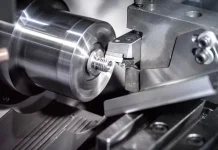Understanding the Importance of I/O Controllers in Modern Computing
From smartphones to sophisticated industrial machinery, everything operates through a complex system of data exchange between hardware components. At the heart of this interaction is the I/O controller, a crucial piece of hardware that ensures seamless communication between the computer’s internal systems and external devices.
What is an I/O Controller?
An I/O controller, or Input/Output controller, is a hardware component that manages the flow of data between the central processing unit (CPU) and external devices. These devices can include peripherals such as keyboards, mice, printers, and storage devices, as well as networked systems. The I/O controller acts as an intermediary that regulates data transfer, ensuring that each device communicates with the computer’s internal components efficiently and without error.
Essentially, the I/O controller helps to offload the task of managing device communication from the CPU, freeing up the processor to focus on running software applications and performing other essential tasks.
Key Functions of I/O Controllers
I/O controllers perform several critical functions that are integral to the overall performance of a system. Some of these functions include:
1. Data Transfer Management: The I/O controller facilitates the movement of data between the computer’s internal memory and external devices. It ensures that data is transmitted at the correct speed and in the right format to avoid transmission errors.
2. Protocol Conversion: Different devices communicate using different protocols, and the I/O controller helps translate these protocols. For instance, it may convert the data from a USB device (which uses a different protocol than an Ethernet network) into a format the computer can process.
3. Interrupt Handling: External devices often generate interrupts to signal the CPU that they need attention. The I/O controller handles these interrupts, notifying the CPU and ensuring that the device’s request is processed in a timely manner.
4. Buffering: I/O controllers frequently use buffers to temporarily store data before it’s transferred to the CPU or peripheral devices. This process prevents data loss and ensures that the data stream is continuous and stable.
Types of I/O Controllers
I/O controllers come in several varieties, depending on the type of devices they are designed to manage. Here are some of the most common types:
1. Parallel I/O Controllers: In the early days of computing, parallel I/O controllers were widely used to manage communication with devices like printers and disk drives. These controllers allowed for the simultaneous transmission of multiple bits of data over several wires. However, with the rise of USB and other serial communication technologies, parallel I/O controllers have become less common.
2. Serial I/O Controllers: Unlike parallel controllers, serial I/O controllers transmit data one bit at a time. These controllers are used for devices like USB ports, serial ports, and modern storage interfaces (e.g., SATA). Serial communication is generally faster and more reliable than parallel communication, which is why it has largely replaced the older parallel technology.
3. Network I/O Controllers: These controllers manage communication between the computer and a network. They are responsible for ensuring that data is sent and received properly over Ethernet, Wi-Fi, or other network types. Network I/O controllers also handle tasks like data packetizing and error checking.
4. Storage I/O Controllers: Storage I/O controllers, such as those used in hard drives and solid-state drives (SSDs), are responsible for managing data exchanges between the storage device and the computer. These controllers ensure that data is read from and written to the storage media accurately and efficiently.
5. Graphics I/O Controllers: In addition to managing standard I/O devices, there are also graphics I/O controllers, which manage the flow of data between the CPU and the graphics card (GPU). These controllers are particularly important in systems with demanding graphical applications, such as gaming, video editing, or 3D rendering.
How I/O Controllers Improve System Performance
Efficient I/O operations are crucial for ensuring that computers and other devices perform optimally. I/O controllers directly contribute to system performance in several ways:
1. Offloading Work from the CPU: By managing data transfer between the CPU and peripherals, I/O controllers relieve the processor from handling these tasks. This allows the CPU to focus on executing programs, which leads to a smoother and faster user experience.
2. Reducing Latency: When data is transferred between the CPU and external devices, latency can become a significant issue. I/O controllers help minimize latency by buffering data and ensuring that it’s transmitted efficiently.
3. Optimizing Throughput: The throughput of a system—the rate at which data is processed and transferred—is crucial for high-performance computing. I/O controllers are designed to maximize throughput by managing how data is handled and preventing bottlenecks from forming.
4. Supporting Multiple Devices: Modern systems often connect to a wide array of peripheral devices. I/O controllers enable multiple devices to operate simultaneously without interfering with each other, improving overall system functionality.
5. Error Detection and Correction: I/O controllers also play a key role in identifying and correcting transmission errors. Whether it’s a bit error during data transfer or a protocol mismatch, the I/O controller helps resolve these issues before they affect system performance.
Conclusion
The I/O controller is an indispensable component of modern computing, facilitating the communication between the central processing unit and a multitude of external devices. Through their ability to manage data transfer, handle interruptions, and improve system performance, I/O controllers are crucial to ensuring the smooth operation of computers, networks, and devices. As technology continues to evolve, the role of the I/O controller will only become more significant, ensuring that our devices can handle the growing demands of data-driven applications and services.









